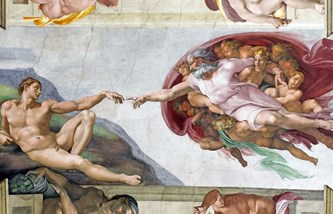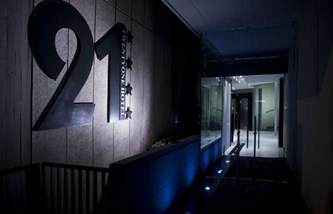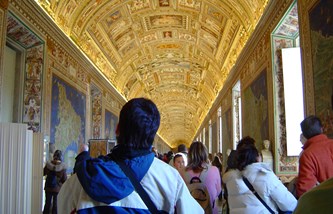Tours

Rome Tourist Card
Rome Tourist Card
Snap up the Rome Tourist Card and you'll get everything you need to explore Rome's top highlights including Colosseum, Palatine Hill, Roman Forum and Hop on/off bus. You can even choose the order you see things in.

Colosseum, Roman Forum & Palatine Hill: Priority Entrance
Colosseum, Roman Forum & Palatine Hill: Priority Entrance
Skip the long lines at the Colosseum with this priority-entrance ticket. This ticket will let you bypass the crowds. And after exploring the Colosseum you can head to the area of the Roman Forum and the Palatine Hill.
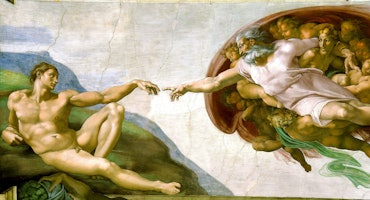
Vatican Museums & Sistine Chapel: Skip The Line
Vatican Museums & Sistine Chapel: Skip The Line
This ticket will make you save stress and time by allowing you to get priority entrance and skip the line. Visit the the countless masterpieces by Michelangelo, Raphael, Caravaggio, Tiziano and the Sistine chapel.
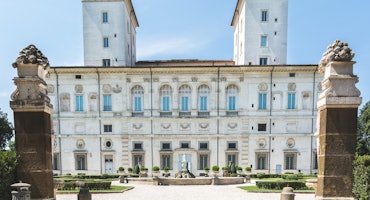
Borghese Gallery: Fast Track
Borghese Gallery: Fast Track
Galleria Borghese is located in the villa of the park Villa Borghese. Admire the architecture and furnishings of this beautiful villa. It is a museum full of art from the Renaissance. The collection includes several sculptures and paintings. Because of limited capacity get tickets for this museum weeks in advance.
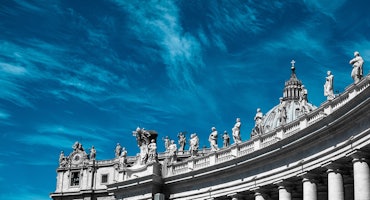
St. Peter’s Basilica: Dome Climb with Guide
St. Peter’s Basilica: Dome Climb with Guide
Get the most out of your visit to St. Peters with a guided tour to climb the basilica’s dome designed by Michelangelo and admire one of the stunning view. After the tour, you can explore the the basilica at your own pace.
Churches in Rome
Rome is the center of Roman Catholicism, mainly thanks to the presence of the smallest independent country in the world, the Vatican State. But, just outside the Vatican walls, Rome features the impressive number of more than 900 churches, and it’s the city with the largest number of catholic worship places in the world. From the III century onwards, those places are the legacy of the architectural and artistic development of the city through time. From the paleochristian to the medieval and gothic buildings, to the magnificence of the Renaissance and Baroque, up to the Modern and Contemporary age, on this page, we have gathered the most beautiful and interesting churches in Rome.
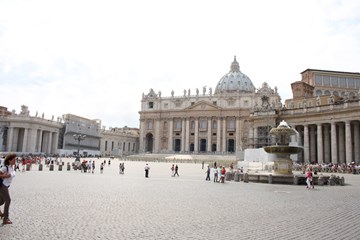
St. Peter's Basilica
The Roman Emperor Constantine “The Great” commissioned the building of St. Peter’s Basilica. Since its construction in 324, the basilica grew old and worn and several attempts have been made to restore it but it was to no avail. Finally, in 1506, it was decided that the old basilica could no longer be saved, hence the construction of the new basilica (we know today) began. Read more…
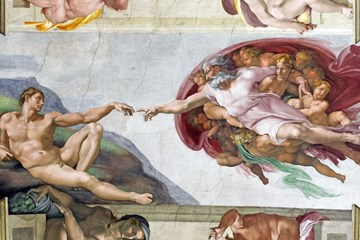
The Sistine Chapel
Commissioned by Pope Sixtus IV, the Sistine Chapel was built between 1477 and 1481 under the supervision of Giovannino de’ Dolci. The architectural structure was designed by Baccio Pontelli and it was decorated by the most famous artists of the time, including Botticelli and Pinturicchio. But, for sure, it is world famous for the incredible frescoes on the ceiling and one of the walls created by the genius of Michelangelo Buonarroti. Read more…
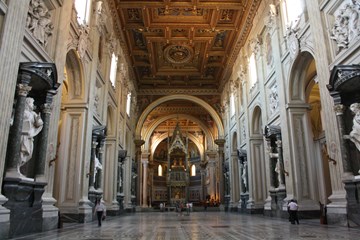
St. John in Lateran
One of the oldest and most important churches in Rome is the St. John in Lateran Archbasilica. This is also one of the seven pilgrimage churches. On its facade there’s an inscription that says Christo Salvatori which means “Christ the Savior”. Although located outside Vatican grounds, the church and adjacent buildings are under the Vatican jurisdiction. Here you can also visit the Baptistery of St. John in Fonte and the Holy Steps (Scala Santa). Read more...
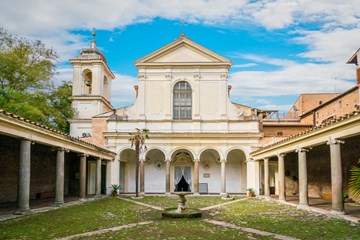
Basilica of San Clemente
A complex of buildings makes up the Basilica San Clemente. This is a XII century church that was dedicated to Pope Clement I. Before being a grand public basilica by the 6th century, it was originally a private home where Christian celebrations were held. Under the present church there are two levels underground, which preserve the remains of the first (I century) and second (IV century) worship sites. Read more…
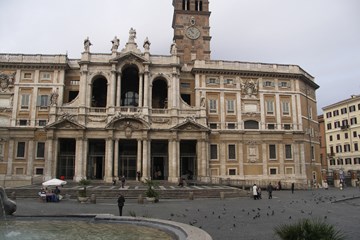
Basilica of St. Mary Major
This basilica is one of the four papal churches and also among the seven pilgrimage churches of Rome. The Basilica of St Mary Major earned its title because of its grandeur not only in size but also for its artistic value. It is the only archbasilica that has preserved its original paleochristian structure. Although it is situated outside the Vatican grounds, it is owned by the Holy See. Read more…
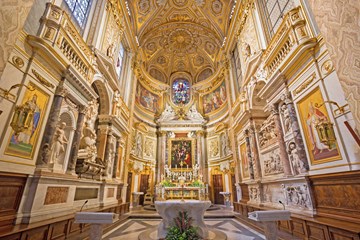
Santa Maria dell’Anima
In English, the name of this German church can be translated as “Our Lady of the Soul”. Founded in 1350 by the couple Johannes and Katharina Peters of Dordrecht, the church served not only as a place of worship, but also as a hospital and refuge center for German pilgrims in Rome. It is the official church of the German Community in Rome. Read more…
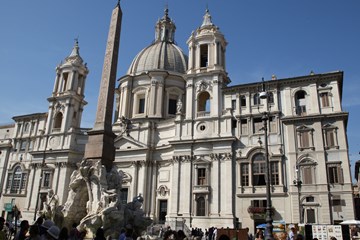
Sant’Agnese in Agone
Designed by the famous Baroque architect Francesco Borromini, this church lights up Piazza Navona with its white and peculiar facade. A popular pilgrimage destination, it features a crypt with the relics of the young Christian martyr Agnese. Read more...
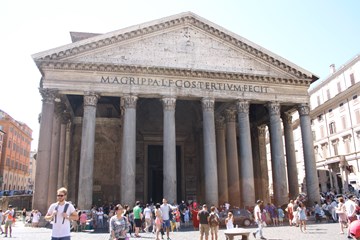
The Pantheon
One of the most famous landmarks and symbols of the city, this unique church was originally a pagan temple, built by Agrippa in 27 BC and reconstructed by the Emperor Hadrian in 120 AD. It is not only one of the most well preserved monuments of the Roman Empire era, but shows the incredible mastery of the architects of the time. Read more...
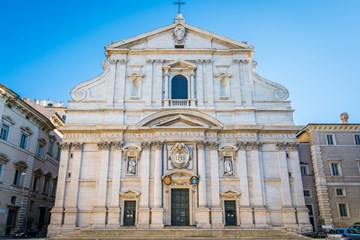
Il Gesù
This church is situated not far from Venice Square and it’s a precious example of the most stunning and rich Baroque style. Built by will of the cardinal Alessandro Farnese, member of one of the most famous families of the city, the church was designed by Giacomo Della Porta, who also designed the Spanish Steps and many other fountains and buildings in the city center. Inside, there is a rare example of a functioning Baroque machine. Read more...
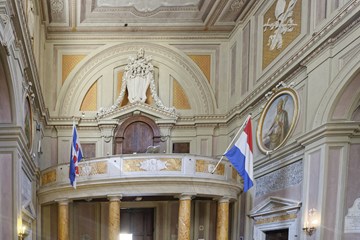
The Frisian Church
This church stands on an ancient worship site. It is also called Ss. Michele e Magno and it’s located on the Janiculum Hill, one of the Roman hills, close to the Vatican City. The first church was built in 1141, but then completely restored in the XVIII century. It is the worship place for the Dutch community in Rome. Read more...
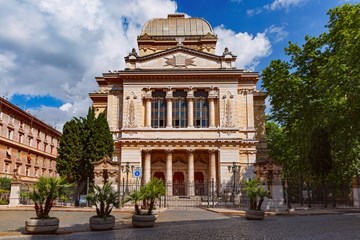
The Great Synagogue
Built at the beginning of the XX century, the synagogue is the symbol of the new found freedom of the Jewish community in Rome. It houses the Jewish Museum and it’s also a cultural center. It is located on the Tiber river banks, at the entrance of the fascinating and historical district called “the Jewish Ghetto”. Read more...
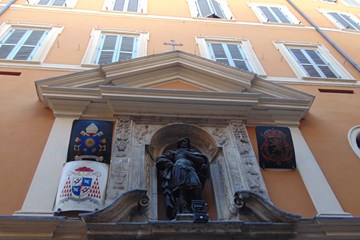
St. Julian of the Flemings
Just like Trinita dei Monti (home of the Roman French Catholic community) and the Frisians Church in Rome, attended by the Dutch community, also the country of Belgium has its very own “national” church. St. Julian of the Flemings (in Italian San Giuliano dei Fiamminghi), is situated between Campo de’ Fiori Square and Venice Square. Originally a hospice, it was founded by Christian Flanders back in the XI century, and rebuilt during the XVII century. Read more...
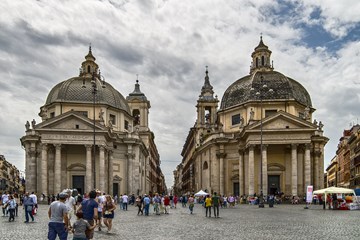
The Twin Churches
In Piazza del Popolo, two identical churches stand on each side of the entrance of Via del Corso. Santa Maria dei Miracoli and Santa Maria in Montesanto are very popular and known as the Twin Churches because of their identical exterior appearance. Designed by the famous architect Carlo Rainaldi, they look the same on the outside, but reveal their different structure once you walk in. Read more...
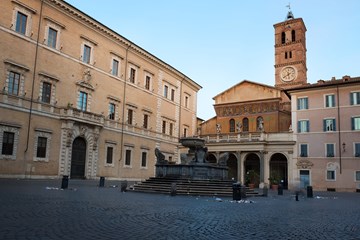
Santa Maria in Trastevere
This important basilica is situated in one of the most charming districts of the city, Trastevere. It’s a very old worship site, in fact the first church that was built here dated back to the III century AD. It’s the oldest Marian church of the city and its current structure belongs to the reconstruction which happened in 1200. A stunning example of Medieval Byzantine art. Read more...
Santa Maria of the Angels and of the Martyrs
This unique church was a project of Michelangelo, who converted the central hall of the ancient thermal complex of the Roman emperor Domitian. Therefore, the church was built without altering the archaeological findings and features a spectacular, large structure. It is situated in Piazza della Repubblica square, just a stroll away from the Termini Station. It’s the church where all the official ceremonies of the Italian Republic take place.
Basilica of Santa Maria del Popolo
This church is at the entrance of Piazza del Popolo and it was rebuilt in the Renaissance and designed by Gian Lorenzo Bernini. Inside, there are paintings of Raffaello and Bernini. The first church (1100 AD) had a monastery annexed where Martin Luther lived in his youth, long before the schism.
Santissima Trinità dei Monti
Sitting at the top of the Spanish Steps, here the mass is officiated both in Italian and in French. It was built with marbles and stones coming from the French city of Narbonne, and it’s a unique example of Gothic French style. The facade and the two twin bell towers were designed by Giacomo Dalla Porta and Carlo Maderno.
Santa Prassede
When you visit one of the most ancient districts of Rome, called Monti, don’t forget to pay a visit to this ancient church. The structure was altered during the centuries, but its wonderful golden Byzantine mosaics in the chapel of St. Zeno, dated IX century, are still perfectly preserved. The church is very close to the famous Basilica of St. Mary Major.
Santo Stefano Rotondo
Situated on the Celio Hill, not far from the Colosseum, this church has rare charm, as it’s built in with a circular, Greek-crossed floor plan. The church was originally built in the V century and, even if the original mosaics are lost, it preserves a unique timeless atmosphere. It is the official church of the Hungarian catholic community.
Santa Maria sopra Minerva
Blue is the predominant color on the wonderful frescoed ceiling of this neo-Gothic church, situated just a few meters away from the Pantheon. Here, you will also find a statue of Christ holding the cross created by Michelangelo and the tombs of the artist Beato Angelico and St. Catherine of Siena. The construction of the church began in 1280, but it took centuries before it was finally completed. That’s why it features so many different artistic styles: a Gothic plan, a Romanic facade, and some later Renaissance artwork and neo-Gothic frescoes. On the square in front of the church, there is an Egyptian obelisk mounted on a marble baby elephant.
St. Ignatius of Loyola
Situated in the district called the Field of Mars (Campo Marzio) the church is a celebration of the baroque style, with its incredibly rich decorations. The most notable ones are the architectural trompe l’oeil painted by the artist Andrea Pozzo, which creates fascinating perspective and visual illusions. The church overlooks the charming Piazza S. Ignazio square.
Santa Cecilia in Trastevere
A church was present on this site since the V century, but it was rebuilt in the IX century and then, up to the XIX century, it received many alterations. Santa Cecilia is situated in a quiet area of the lively district of Trastevere. Here you will admire the ciborium made by Arnolfo di Cambio in the XIII century and a beautiful and touching marble statue depicting St. Cecilia’s body in the same position in which it was found during the renovation works in 1599. She is one of the most famous martyrs of Christianity.
Sant’Ivo alla Sapienza (Navona Square)
Just behind the Navona Square, you can visit this interesting Baroque church designed by the architect Francesco Borromini. With its triangular plan and daring lines, it definitely defies the traditional “rules” of religious architecture. One of the most notable features is the lantern with spiral spire sitting at the very top of the church.
Cosma and Damiano
This is one of the most ancient and fascinating churches of Rome. It was built in 526 AD using an ancient Roman structure dating back to the Empire, and it’s therefore the first Catholic worship site built in the area of the Roman Forum. Cosma and Damiano were two brothers, doctors and martyrs. They lived in Asia Minor, but when they died, their bodies were carried to Rome and are now under the altar in the basilica. It has been reconstructed in the middle age and then again in the XVI century. It features a beautiful Byzantine mosaic in the apse.
St. Girolamo
Also called St. Girolamo della Carità, this church is a masterpiece of the architect Carlo Rainaldi, who also designed the Twin Churches in Piazza del Popolo square, (the facade of St. Mary Major). Inside, there is a stunning wooden ceiling and the church has a single nave structure. It is very close to the Farnese Palace.
Santa Maria della Concezione
Also called Santa Maria della Concezione of the Capuchins, this church is located in the lower part of the charming Via Veneto. It was built in the XVII century and it has a small central nave with ten small chapels on its sides. The most interesting feature is the crypt, which has five chapels decorated with the relics (bones, skulls and intact skeletons and mummies) of the Capuchin monks who died between the XVI and the XIX century.
San Crisogono
Dedicated to the Saint Chrisogonus, this church is one of the oldest in Rome. It is located in the district of Trastevere. Originally built in 300 AD, is has been renovated several times. It features a Romanesque bell tower dating 1100 AD. From the sacristy, below the church, it is possible to access the remains of the older structure belonging to the age of Constantine the Great.
Basilica of San Paolo outside the Walls
This church is one of the four papal basilicas of the city, and the second largest, after St. Peter’s. It is located on the Via Ostiense on the very spot where St. Paul suffered martyrdom, was decapitated and then buried. This basilica has been declared a Unesco World Heritage site since 1980. Inside, you can admire the massive Byzantine structure, the portraits of all the popes, the beautiful portal decorated with 54 panels of carved silver foils and the large mosaic on the apse. In 1823 a great fire destroyed a large part of the basilica, which was reconstructed exactly as it was before and officially reopened in 1854. Outside the church, you can visit many attractions, including a large area featuring the remains of the ancient Roman site and the Chapel of the Relics.
Basilica of SS. Peter and Paul
Situated in the modern district of EUR in the South of the city, this modern church was built between 1939 and 1955. World War II caused delays in the finalization of the project. The site was unfortunately also damaged during the conflict. It features a Greek cross floor plan and a large dome, which is one of the tallest in the city.
The Chapel of the Madonna dell’Archetto (the smallest church in Rome)
We now close this roundup of some of the most beautiful temples of Christianity with a very peculiar site. Situated at the very end of a narrow street in the district Trevi, Via di San Marcello 41. This tiny oratory, which can accommodate around ten people, was built to venerate a painting of the Holy Mary which was placed under a small arch in a narrow alley nearby. Apparently the portrait of the Madonna rolled her eyes several times in 1796 and then wept just before the French invasion in 1798. This small church is richly decorated with a dome, marbles, statues, finely carved wood and precious metals. It was designed by the architect Virginio Vespignani, who, later on, painted the frescoes on the dome of the Washington Capitol. The site was declared a national monument and officially opened to the public in 1851. It is only open (and therefore accessible) for the 7 pm daily mass celebration.

